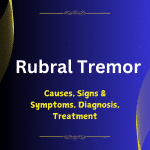What is Gamma Sterilization & its Benefits
Gamma sterilization is a process that uses ionizing radiation to kill microorganisms. It is a highly effective method of sterilization that can be used to sterilize a wide variety of materials, including plastics, rubber, metal, and textiles.
It is a form of electromagnetic radiation that is similar to X-rays but with higher energy. When gamma radiation interacts with matter, it can break chemical bonds, which can damage or destroy microorganisms.
This method is a safe and effective method of sterilization. The radiation dose is carefully controlled to ensure that it is sufficient to kill microorganisms, but not so high that it damages the sterilized items.
Gamma sterilization is a rapid process. Most items can be sterilized in minutes or hours. This makes it a good option for items that need to be sterilized quickly, such as surgical instruments.
Gamma sterilization is a versatile process. It can be used to sterilize a wide variety of materials, including those that are heat-sensitive or that cannot be sterilized by other methods, such as steam sterilization.
Gamma sterilization is a reliable process. It has been used for decades to sterilize medical devices and other products, and it has a proven track record of effectiveness.
How does gamma sterilization work?
It works by using ionizing radiation to kill microorganisms. Ionizing radiation is a type of radiation that has enough energy to knock electrons out of atoms. When this happens, the atoms become charged, or ionized. Ionized atoms are unstable and can react with other atoms, causing damage to cells and DNA.
Gamma radiation is produced by radioactive materials, such as cobalt-60 or cesium-137. These materials are sealed in a chamber with the items to be sterilized. The radiation is then directed at the items for a predetermined amount of time. The amount of time required depends on the type of material being sterilized and the level of sterility required.
It involves four main steps:
- Preparation: The products to be sterilized are cleaned and packaged in a suitable material that allows the gamma rays to pass through. The packaging also protects the products from contamination during transportation and storage.
- Sterilization: The packaged products are placed in a gamma sterilizer, which is a sealed chamber that contains a source of gamma rays, usually Cobalt-60. The gamma rays are emitted from the source and irradiate the products for a predetermined amount of time and dose. The dose depends on the type and size of the products, as well as the level of sterility required.
- Aeration: After the sterilization process is complete, the products are removed from the chamber and allowed to aerate for a certain period of time. Aeration is necessary to remove any residual gamma rays or gases that may be present in the products or the packaging.
- Testing: After the aeration process is complete, the products are tested to ensure that they are sterile and meet the specifications. The most common method of testing is the sterility test, which involves culturing samples of the products in a growth medium and observing for any microbial growth.
Benefits of gamma sterilization
Gamma sterilization has a number of benefits, including:
- It is a highly effective method of sterilization.
- It is a rapid process.
- It is a versatile process.
- It is a reliable process.
Drawbacks of gamma sterilization
Gamma sterilization also has a number of drawbacks, including:
- It can be expensive.
- It requires special equipment.
- It can be a safety hazard.
- It can damage some materials.
Gamma Sterilization Vs Autoclaving
| Gamma Sterilization | Autoclaving |
|---|---|
| Uses gamma rays, a form of electromagnetic radiation, to kill microorganisms by breaking their DNA | Uses steam, heat, and pressure to kill microorganisms by denaturing their proteins |
| Can sterilize a wide range of materials, including plastics, metals, rubber, and ceramics | Can sterilize mainly heat-resistant materials, such as glass, metal, and some plastics |
| Does not leave any residue or chemical by-products on the products or the packaging | May leave some moisture or mineral deposits on the products or the packaging |
| Does not affect the physical or mechanical properties of the products or the packaging | May affect the physical or mechanical properties of some products or materials |
| Requires a high initial investment for the gamma sterilizer and the gamma source | Requires a low initial investment for the autoclave machine |
| Requires special handling and storage of the gamma source, as it is radioactive and hazardous | Does not require special handling and storage of the steam source, as it is not radioactive or hazardous |
| Requires regular monitoring and calibration of the gamma source and the gamma sterilizer to ensure consistent performance and safety | Requires regular maintenance and cleaning of the autoclave machine to ensure proper functioning and hygiene |
| May cause some changes in the color or odor of some materials or products | May cause some changes in the color or odor of some materials or products |
Safety precautions for gamma sterilization
Gamma sterilization is a safe process, but it is important to take precautions to protect workers from exposure to radiation. These precautions include:
- Using a properly shielded gamma sterilizer.
- Wearing personal protective equipment, such as gloves, a mask, and goggles.
- Avoiding skin contact with radiation.
- Avoiding breathing in radiation.
Alternatives to gamma sterilization
There are a number of alternatives to gamma sterilization, including:
- Steam sterilization.
- Dry heat sterilization.
- Ethylene oxide sterilization.
- Chemical sterilization.
The best alternative for you will depend on the specific needs of your facility.
Conclusion
Gamma sterilization is a safe and effective method of sterilization that can be used to sterilize a wide variety of materials. It is a rapid process that is versatile and reliable. However, it can be expensive and require special equipment. If you are considering gamma sterilization, it is important to weigh the benefits and drawbacks to determine if it is the best option for your needs.
FAQs
What is gamma sterilization?
Gamma sterilization is a process that uses ionizing radiation to kill microorganisms.
What are the benefits of gamma sterilization?
Gamma sterilization is a highly effective method of sterilization that can be used to sterilize a wide variety of materials. It is a rapid process and it is a reliable process.
What are the drawbacks of gamma sterilization?
Gamma sterilization can be expensive and it requires special equipment. It can also be a safety hazard and it can damage some materials.
How does gamma sterilization work?
Gamma sterilization works by using ionizing radiation to kill microorganisms. Ionizing radiation is a type of radiation that has enough energy to knock electrons out of atoms. When this happens, the atoms become charged, or ionized. Ionized atoms are unstable and can react with other atoms, causing damage to cells and DNA.
What are the safety precautions for gamma sterilization?
Gamma sterilization is a safe process, but it is important to take precautions to protect workers from exposure to radiation. These precautions include:
- Using a properly shielded gamma sterilizer.
- Wearing personal protective equipment, such as gloves, a mask, and goggles.
- Avoiding skin contact with radiation.
- Avoiding breathing in radiation.
What are the alternatives to gamma sterilization?
There are a number of alternatives to gamma sterilization, including:
- Steam sterilization.
- Dry heat sterilization.
- Ethylene oxide sterilization.
- Chemical sterilization.
The best alternative for you will depend on the specific needs of your facility.
Latest Post
- Premenstrual Syndrome (PMS) Explained: Powerful Relief Strategies for 2026

- Magnetic Seizure Therapy (MST): A Breakthrough in Psychiatric Treatment in 2025

- AIIMS New Delhi, NIMHANS Bengaluru, JIPMER Puducherry: No Leaves for Healthcare Workers Amid Tensions

- Narcissistic Personality Disorder in 2025: Unveiling the Hidden Struggles and Empowering Recovery

- Conquering Rubral Tremor: Unveiling Effective Treatments in 2025

